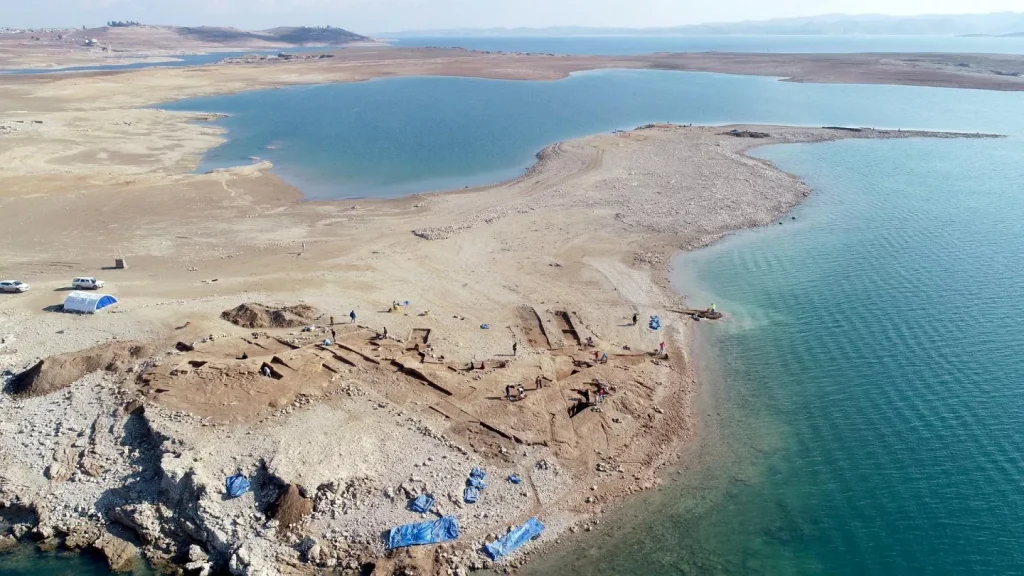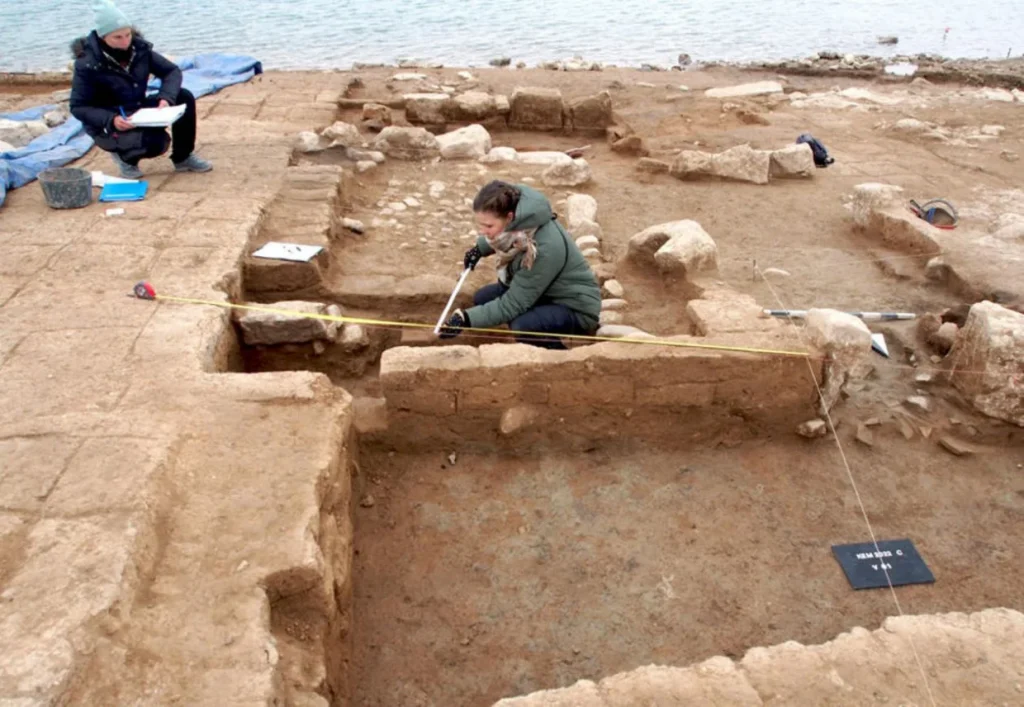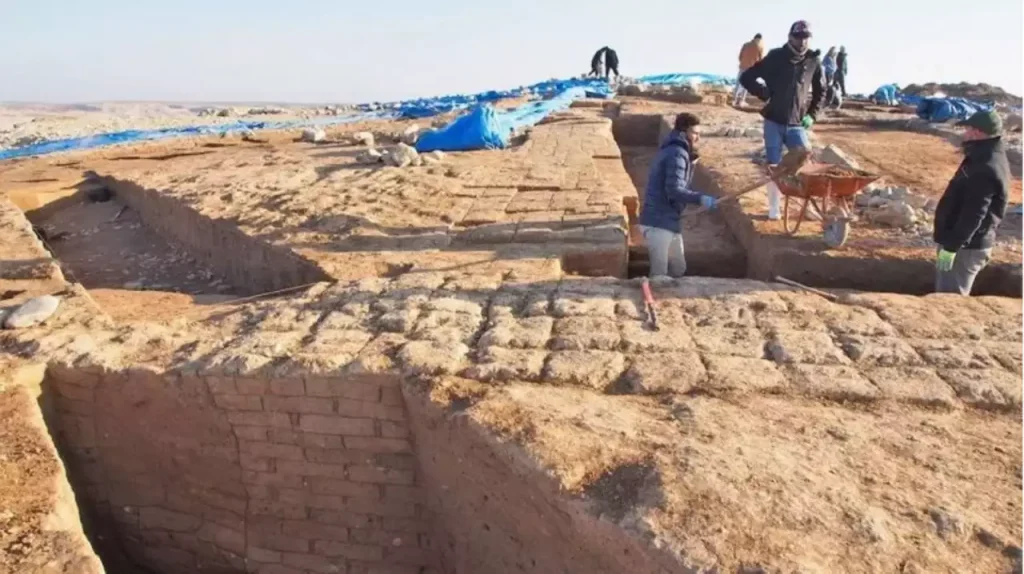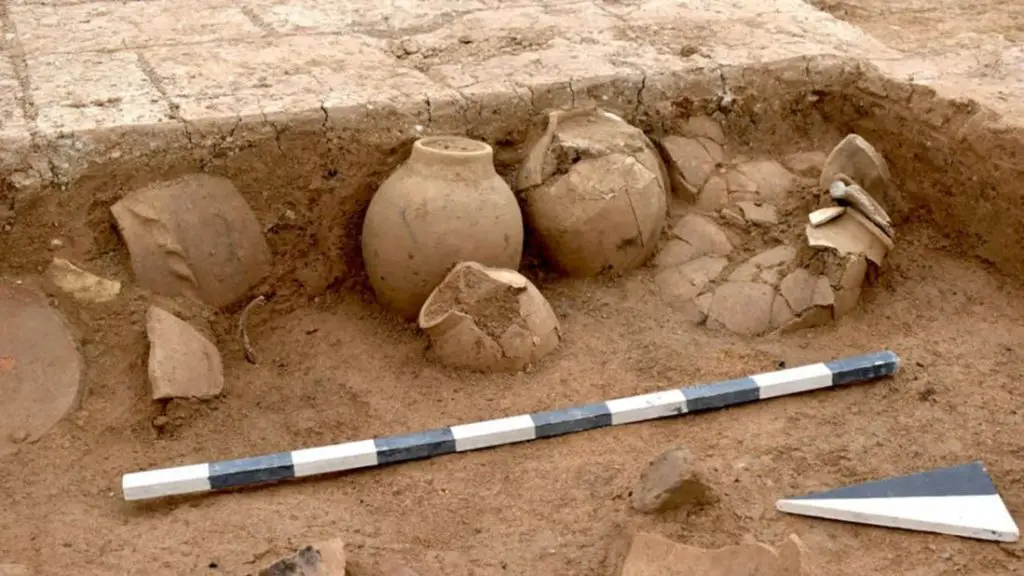Archaeologists recently made an exciting discovery in Iraq. They found the remains of a lost city that dates back 3,400 years. This ancient city, which includes a palace and a large fort, was hidden beneath the waters of the Tigris River. However, due to an extreme drought that caused water levels in the country’s largest reservoir to drop significantly, the ruins emerged earlier this year in the Mosul Dam.

A team of German and Kurdish archaeologists documented the city, located in the Kurdistan region at a place called Kemune. It is believed that this settlement played a crucial role during the Mittani Empire, which existed from 1550 to 1350 B.C. It likely served as a vital link between the core region of the empire in present-day northeastern Syria and its eastern periphery.
The ruins of the ancient city include towers, a grand palace, and other large structures. Surprisingly, the fortification walls, made of sun-dried mud bricks, have remarkably endured the test of time, standing several meters tall in certain areas.

The archaeologists believe that the city, known as Zakhiku in ancient times, was destroyed by an earthquake around 1350 B.C. This natural disaster buried most of the surviving buildings, thus preserving them in relatively good condition for thousands of years.
During the excavation at Kemune, the researchers discovered five ceramic vessels containing more than 100 tablets inscribed with cuneiform script. These artifacts, potentially ancient correspondence, belong to the Middle Assyrian period, shortly after the destructive earthquake. The survival of cuneiform tablets made of unfired clay for such a long time underwater is seen as quite miraculous.

The uncovering of the archaeological site was made possible when water levels in the Mosul Dam were reduced to prevent damage to crops during the region’s ongoing drought. The archaeologists took advantage of the opportunity and worked tirelessly during January and February to map and excavate as much of the ancient city as they could before the water levels rose again.
The team faced significant pressure due to the uncertainty of how much time they had before the water would return. Nonetheless, their dedication and hard work paid off, resulting in impressive findings. The ancient city had been known to scientists for some time, but it remained submerged since the construction of the Mosul Dam in the 1980s. However, in 2018, a drought caused a portion of the settlement to resurface temporarily, leading to the excavation of sections of the palace. This work gave clues that the structure was part of a much larger city at Kemune.

To protect the ancient ruins, the archaeologists covered them with a plastic coating and filled the site with gravel. This measure will safeguard the walls made of unbaked clay. Since February, water levels in the dam have been gradually rising, and the city is once again submerged. It is impossible to predict when it will resurface, but the dedicated team of archaeologists is determined to be there when that time comes.